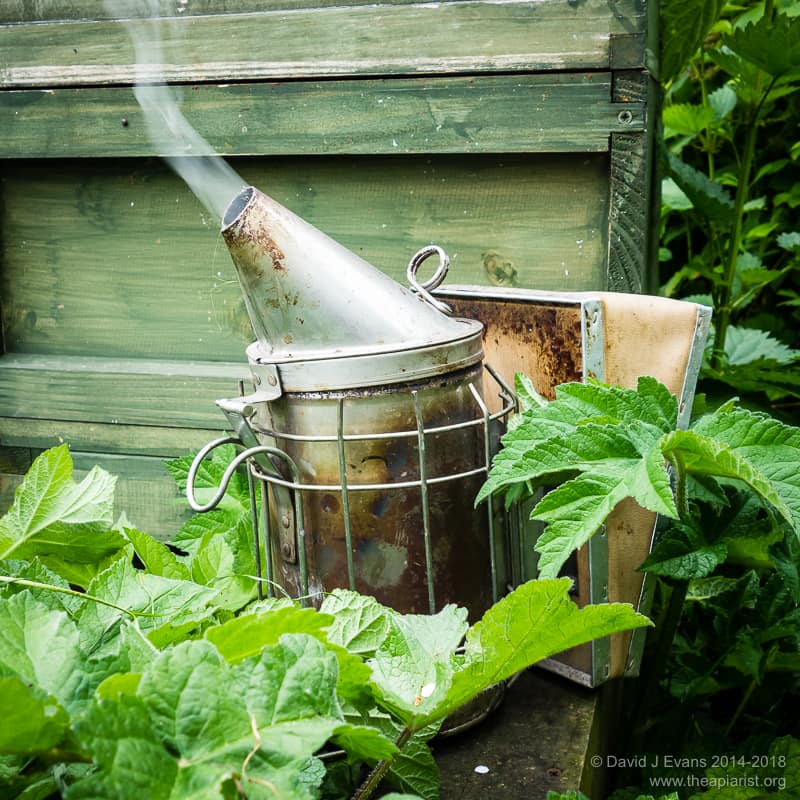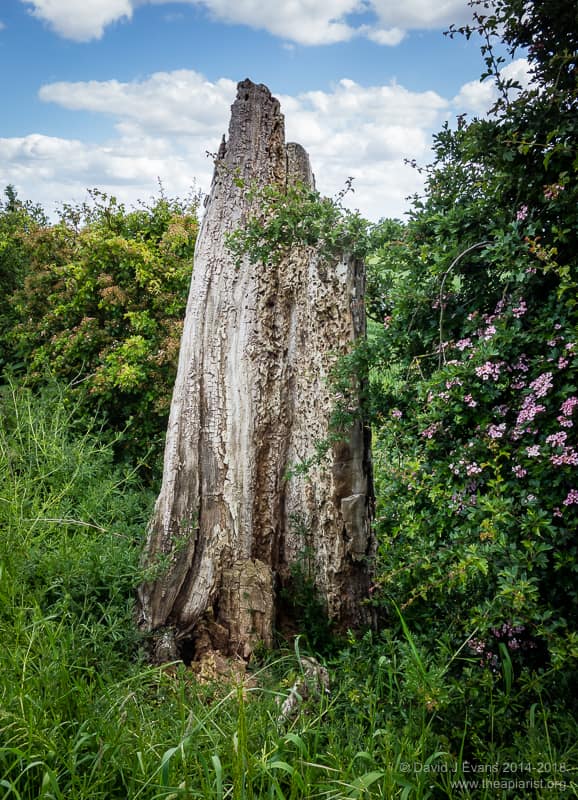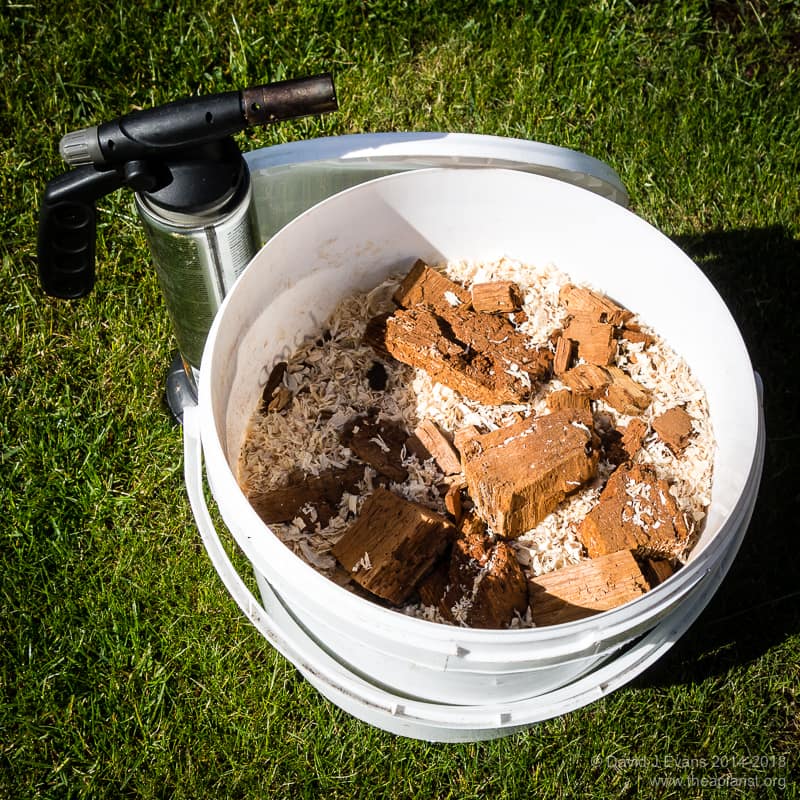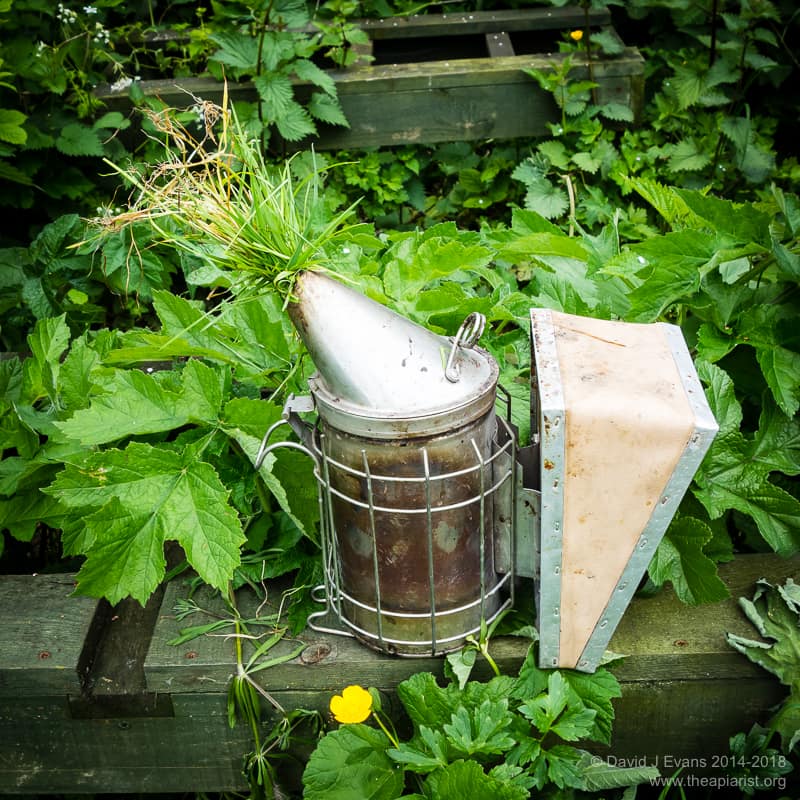Smoker fuel

Dadant smoker
A regular topic on the beekeeping forum is smoker fuel … what to use, how to get it to ignite and how to keep it alight. There are as many answers as there are contributors to the threads, actually usually more. Lighting the smoker is part of the ritual of hive inspections, though it’s not always necessary. A plant mister makes a suitable alternative, particularly for small colonies and nucs. For mini-nucs, it’s the only thing I use. However, for large colonies, particularly for large aggressive colonies (which you’re presumably intending to requeen as soon as practical 😉 ), having a lit smoker to hand can provide peace of mind.
Which smoker?
In my limited experience (I’ve only ever owned two), large smokers are easier to light and work both better and longer. With the exception of those that get lost (it happens) or reversed over when leaving the apiary car park (ditto), a good quality smoker should last for many years. I’ve got the smaller of the two Dadant smokers (see image above). I should have probably got the larger one (10 x 4) which is the only model stocked by Thorne’s. At around £50 it’s not cheap, but I expect it to last years more.
Which fuel?

The mother lode …
I use egg boxes for quick inspections. They’re easy to carry, ignite easily and smoulder very well, producing a cool – though perhaps rather acrid – smoke. I usually have one in the bag of stuff I carry to the apiary and – on a calm day – can even be used in the absence of the smoker. Alternatively, for longer inspections I use a mix of wood chips and dried rotten wood. Every year or two I’ll find a tree that’s been blown down in the winter storms, uncovering a rotten core. I collect the wood, dry it in my greenhouse and store it in an old plastic dustbin. I buy chipped wood animal bedding from the local Wilkinsons (where they call them ‘wood shavings‘). A large pack, supplemented with dried rotten wood will comfortably last a full season, which is pretty good value for £2. An old 30 lb honey bucket makes a convenient container to store and carry the wood chips/rotten wood mix in.
Lighting

Fuel bucket …
The majority of beekeepers I know use a blowtorch to light their smokers, and with good reason. If you get one with a spark ignition system it will light even in a strong wind. No more struggling with matches while sheltering in the lee of the apiary shed, or cowering in the car boot. A 20 second blast into a part-filled smoker, a few puffs of the bellows followed by topping up of the fuel, should be sufficient for a long session in the apiary. A well-lit Dadant smoker will remain smouldering for 30-40 minutes without attention (for example, as happened this afternoon, while I returned home to collect a spare brood box and frames to perform an emergency Demaree on a colony thinking about going AWOL*). After this period it might need quite a bit of encouragement to produce a good plume of smoke, but a regular couple of puffs of the bellows during the apiary session will keep it ready for immediate use.

Job done …
Periodically you’ll come across nightmare stories about smokers causing car fires … they can remain hot for a long time. Either transport them in a tin box or bucket, or make sure they are well and truly out. I stuff mine with grass immediately I finish inspections, potter about a bit tidying up and put the smoker in the car at the very end, once it’s cool to the touch.
Finally, I recommend you don’t leave a smoker in a car overnight … the smell of smoke permeates everywhere and can cause all sorts of domestic problems if you don’t have a dedicated bee-vehicle 😉
- this was written in mid-May but posting was delayed once queen rearing started
Join the discussion ...